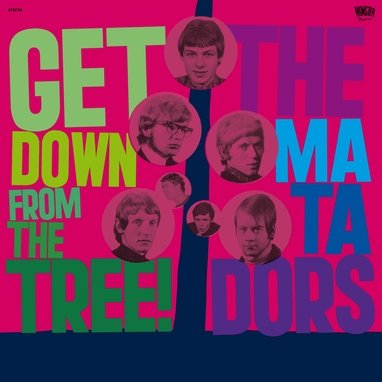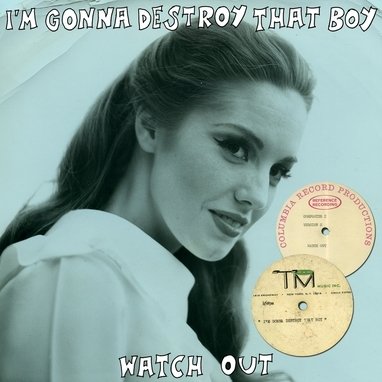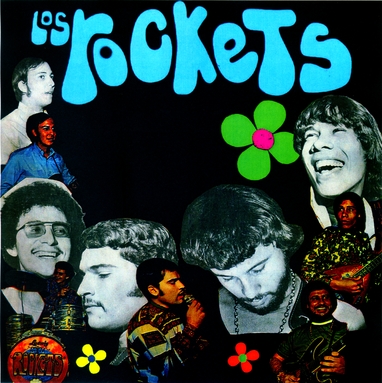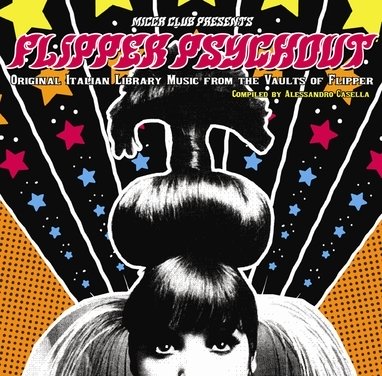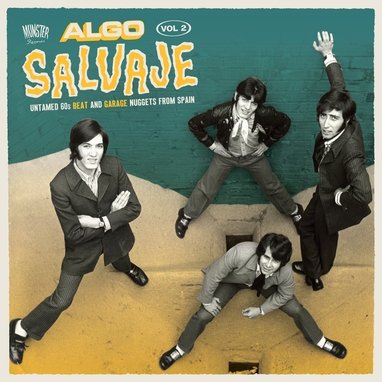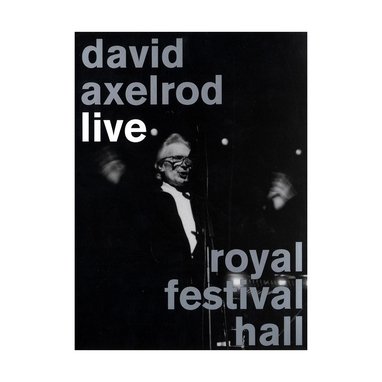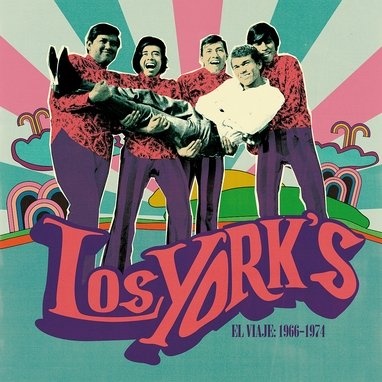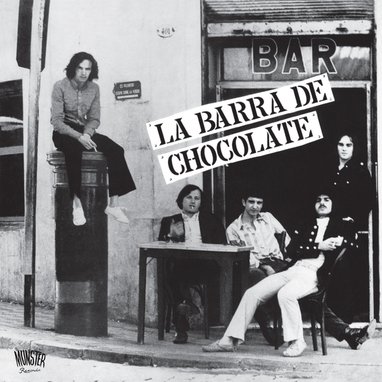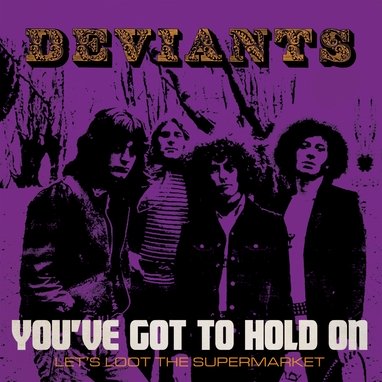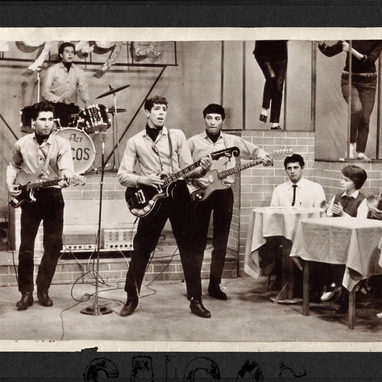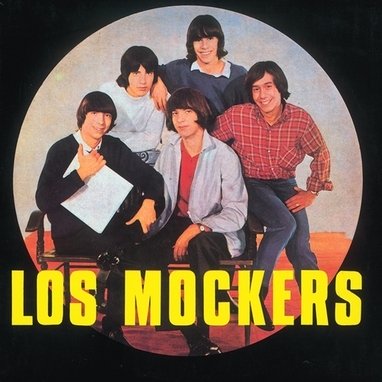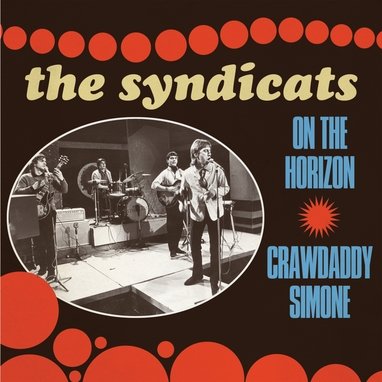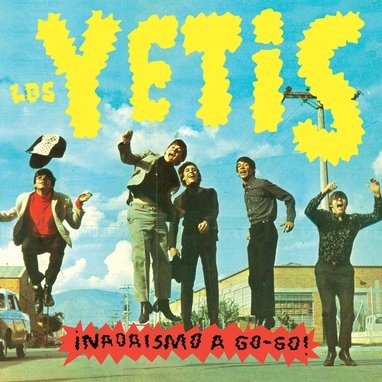The Matadors
Get Down From The Tree!
1,50€
Munster
The Matadors
Get Down From The Tree!
We are very proud to present The Matadors’ studio recordings 1966–1968 for the first time ever as a complete collection. From the early twist instrumentals through to solid R&B/soul covers and up to their classic psychedelic freakbeat originals, all tracks have been remastered from the original analogue master tapes. Even 40 years after they disbanded, the legendary Matadors still remain one of the best known big beat bands from former Czechoslovakia. Some of the original members would continue with munch-respected groups such as The Blue Effect or Emergency. Includes liner notes by expert Lukáš Machata plus photos and original sleeves.
The amateur drummer Wilfried Jelinek (1939) – a German student in Prague with Czech roots – formed the Czech-German rock’n’roll group Pra-Be (Praha-Berlin) in 1960. After many personnel changes, Jan Farmer Obermayer (1944) joined them as saxophonist in 1964, along with Otto Bezloja (1945–2001) on bass guitar. Both came from Komety, then already legendary pioneers of Czech rock’n’roll. Pra-Be was eventually renamed to Fontana in early 1965. They recruited yet another two ex-Komety members, the lead guitarist Radim Hladik (1946), as well as Vladimir Misik (1947), who played rhythm guitar at first but soon switched to blues harp and vocals. The actual birth of The Matadors dates to May 1965, after Jelinek secured a deal at the Expo Leipzig for extensively testing and promoting various music equipment on tour. Among those instruments was an electric organ named Matador. They initially performed solely in Germany, mainly in Jelinek’s home region around Zittau. As second lead vocalist and rhythm guitarist came Karel Kahovec (1946), formerly of the Hell’s Devils. In September 1965 Jelinek gave up on drumming, and The Matadors’ line-up was completed with another ex-Hell’s Devils, the drummer Miroslav Schwarz (1946), better known as Tony Black. In April 1966, The Matadors finally returned to their hometown, Prague. Their first gigs were an immediate success, putting the group on a par with local stars like Donald, Mefisto or Olympic. With the latter they began to regularly share the stage at the renowned clubs Olympik and Slunicko, eventually presenting weekly beat news with cover versions of the world’s latest rock hits. One of their first own compositions was ‘Sing A Song Of Sixpence’, an early psychedelic effort with rather meaningless lyrics extracted from an English children’s book. But it already carried Kahovec’s signature songwriting, which he further developed later as a member of Flamengo. Mišík, on the other hand, leaned towards heavy blues rock, as apparent, for example, from his ‘Malej zvon, co mam’. By the end of the year both lead vocalists were replaced by ex-Flamengo singer Viktor Sodoma (1945), with Misik only guesting once more for a recording session in January 1967. Sodoma and Bezloja began to form the group’s visual image, influenced by Western magazines showing first reports about American hippies. Bezloja actually tended to present himself in an androgynous glam look, possibly even preceding David Bowie or Marc Bolan. The only Matadors album was recorded within a week between May and June 1968, ordered by the PZO Artia company and intended mainly for export. Besides new own material and several solid pop, soul and R&B cover versions, it contains the remarkable psychedelic studio improvisation ‘Extraction’. In summer 1968, Sodoma and Obermayer left the group. Sodoma was replaced by yet another Hell’s Devils and Komety veteran, the highly talented soul singer Milos Reddy Vokurka, and Jiri Matousek took over the organ. In the meantime, The Matadors were asked to perform as backing band for the brand new German version of musical Hair/Haare in Munich, West Germany. In October, Hladik quitted as well, heading to form The Blue Effect with Vladimír Misik a few weeks later. Bezloja, Black, Reddy and Matousek were then joined by the young guitarist Petr Netopil, with whom they played the last few gigs in Prague, before the band relocated to Munich for good. Eventually, the nucleus of the band transformed into the legendary international prog rock combo Emergency, still including Bezloja, Reddy, Matousek and Berka, as well as a certain young drummer called Udo Lindenberg.
Productos relacionados
1,50€
We are very proud to present The Matadors’ studio recordings 1966–1968 for the first time ever as a complete collection. From the early twist instrumentals through to solid R&B/soul covers and up to their classic psychedelic freakbeat originals, all tracks have been remastered from the original analogue master tapes. Even 40 years after they disbanded, the legendary Matadors still remain one of the best known big beat bands from former Czechoslovakia. Some of the original members would continue with munch-respected groups such as The Blue Effect or Emergency. Includes liner notes by expert Lukáš Machata plus photos and original sleeves.
The amateur drummer Wilfried Jelinek (1939) – a German student in Prague with Czech roots – formed the Czech-German rock’n’roll group Pra-Be (Praha-Berlin) in 1960. After many personnel changes, Jan Farmer Obermayer (1944) joined them as saxophonist in 1964, along with Otto Bezloja (1945–2001) on bass guitar. Both came from Komety, then already legendary pioneers of Czech rock’n’roll. Pra-Be was eventually renamed to Fontana in early 1965. They recruited yet another two ex-Komety members, the lead guitarist Radim Hladik (1946), as well as Vladimir Misik (1947), who played rhythm guitar at first but soon switched to blues harp and vocals. The actual birth of The Matadors dates to May 1965, after Jelinek secured a deal at the Expo Leipzig for extensively testing and promoting various music equipment on tour. Among those instruments was an electric organ named Matador. They initially performed solely in Germany, mainly in Jelinek’s home region around Zittau. As second lead vocalist and rhythm guitarist came Karel Kahovec (1946), formerly of the Hell’s Devils. In September 1965 Jelinek gave up on drumming, and The Matadors’ line-up was completed with another ex-Hell’s Devils, the drummer Miroslav Schwarz (1946), better known as Tony Black. In April 1966, The Matadors finally returned to their hometown, Prague. Their first gigs were an immediate success, putting the group on a par with local stars like Donald, Mefisto or Olympic. With the latter they began to regularly share the stage at the renowned clubs Olympik and Slunicko, eventually presenting weekly beat news with cover versions of the world’s latest rock hits. One of their first own compositions was ‘Sing A Song Of Sixpence’, an early psychedelic effort with rather meaningless lyrics extracted from an English children’s book. But it already carried Kahovec’s signature songwriting, which he further developed later as a member of Flamengo. Mišík, on the other hand, leaned towards heavy blues rock, as apparent, for example, from his ‘Malej zvon, co mam’. By the end of the year both lead vocalists were replaced by ex-Flamengo singer Viktor Sodoma (1945), with Misik only guesting once more for a recording session in January 1967. Sodoma and Bezloja began to form the group’s visual image, influenced by Western magazines showing first reports about American hippies. Bezloja actually tended to present himself in an androgynous glam look, possibly even preceding David Bowie or Marc Bolan. The only Matadors album was recorded within a week between May and June 1968, ordered by the PZO Artia company and intended mainly for export. Besides new own material and several solid pop, soul and R&B cover versions, it contains the remarkable psychedelic studio improvisation ‘Extraction’. In summer 1968, Sodoma and Obermayer left the group. Sodoma was replaced by yet another Hell’s Devils and Komety veteran, the highly talented soul singer Milos Reddy Vokurka, and Jiri Matousek took over the organ. In the meantime, The Matadors were asked to perform as backing band for the brand new German version of musical Hair/Haare in Munich, West Germany. In October, Hladik quitted as well, heading to form The Blue Effect with Vladimír Misik a few weeks later. Bezloja, Black, Reddy and Matousek were then joined by the young guitarist Petr Netopil, with whom they played the last few gigs in Prague, before the band relocated to Munich for good. Eventually, the nucleus of the band transformed into the legendary international prog rock combo Emergency, still including Bezloja, Reddy, Matousek and Berka, as well as a certain young drummer called Udo Lindenberg.
Productos relacionados
Get Down From The Tree!
We are very proud to present The Matadors’ studio recordings 1966–1968 for the first time ever as a complete collection. From the early twist instrumentals through to solid R&B/soul covers and up to their classic psychedelic freakbeat originals, all tracks have been remastered from the original analogue master tapes. Even 40 years after they disbanded, the legendary Matadors still remain one of the best known big beat bands from former Czechoslovakia. Some of the original members would continue with munch-respected groups such as The Blue Effect or Emergency. Includes liner notes by expert Lukáš Machata plus photos and original sleeves.
The amateur drummer Wilfried Jelinek (1939) – a German student in Prague with Czech roots – formed the Czech-German rock’n’roll group Pra-Be (Praha-Berlin) in 1960. After many personnel changes, Jan Farmer Obermayer (1944) joined them as saxophonist in 1964, along with Otto Bezloja (1945–2001) on bass guitar. Both came from Komety, then already legendary pioneers of Czech rock’n’roll. Pra-Be was eventually renamed to Fontana in early 1965. They recruited yet another two ex-Komety members, the lead guitarist Radim Hladik (1946), as well as Vladimir Misik (1947), who played rhythm guitar at first but soon switched to blues harp and vocals. The actual birth of The Matadors dates to May 1965, after Jelinek secured a deal at the Expo Leipzig for extensively testing and promoting various music equipment on tour. Among those instruments was an electric organ named Matador. They initially performed solely in Germany, mainly in Jelinek’s home region around Zittau. As second lead vocalist and rhythm guitarist came Karel Kahovec (1946), formerly of the Hell’s Devils. In September 1965 Jelinek gave up on drumming, and The Matadors’ line-up was completed with another ex-Hell’s Devils, the drummer Miroslav Schwarz (1946), better known as Tony Black. In April 1966, The Matadors finally returned to their hometown, Prague. Their first gigs were an immediate success, putting the group on a par with local stars like Donald, Mefisto or Olympic. With the latter they began to regularly share the stage at the renowned clubs Olympik and Slunicko, eventually presenting weekly beat news with cover versions of the world’s latest rock hits. One of their first own compositions was ‘Sing A Song Of Sixpence’, an early psychedelic effort with rather meaningless lyrics extracted from an English children’s book. But it already carried Kahovec’s signature songwriting, which he further developed later as a member of Flamengo. Mišík, on the other hand, leaned towards heavy blues rock, as apparent, for example, from his ‘Malej zvon, co mam’. By the end of the year both lead vocalists were replaced by ex-Flamengo singer Viktor Sodoma (1945), with Misik only guesting once more for a recording session in January 1967. Sodoma and Bezloja began to form the group’s visual image, influenced by Western magazines showing first reports about American hippies. Bezloja actually tended to present himself in an androgynous glam look, possibly even preceding David Bowie or Marc Bolan. The only Matadors album was recorded within a week between May and June 1968, ordered by the PZO Artia company and intended mainly for export. Besides new own material and several solid pop, soul and R&B cover versions, it contains the remarkable psychedelic studio improvisation ‘Extraction’. In summer 1968, Sodoma and Obermayer left the group. Sodoma was replaced by yet another Hell’s Devils and Komety veteran, the highly talented soul singer Milos Reddy Vokurka, and Jiri Matousek took over the organ. In the meantime, The Matadors were asked to perform as backing band for the brand new German version of musical Hair/Haare in Munich, West Germany. In October, Hladik quitted as well, heading to form The Blue Effect with Vladimír Misik a few weeks later. Bezloja, Black, Reddy and Matousek were then joined by the young guitarist Petr Netopil, with whom they played the last few gigs in Prague, before the band relocated to Munich for good. Eventually, the nucleus of the band transformed into the legendary international prog rock combo Emergency, still including Bezloja, Reddy, Matousek and Berka, as well as a certain young drummer called Udo Lindenberg.
We are very proud to present The Matadors’ studio recordings 1966–1968 for the first time ever as a complete collection. From the early twist instrumentals through to solid R&B/soul covers and up to their classic psychedelic freakbeat originals, all tracks have been remastered from the original analogue master tapes. Even 40 years after they disbanded, the legendary Matadors still remain one of the best known big beat bands from former Czechoslovakia. Some of the original members would continue with munch-respected groups such as The Blue Effect or Emergency. Includes liner notes by expert Lukáš Machata plus photos and original sleeves.
The amateur drummer Wilfried Jelinek (1939) – a German student in Prague with Czech roots – formed the Czech-German rock’n’roll group Pra-Be (Praha-Berlin) in 1960. After many personnel changes, Jan Farmer Obermayer (1944) joined them as saxophonist in 1964, along with Otto Bezloja (1945–2001) on bass guitar. Both came from Komety, then already legendary pioneers of Czech rock’n’roll. Pra-Be was eventually renamed to Fontana in early 1965. They recruited yet another two ex-Komety members, the lead guitarist Radim Hladik (1946), as well as Vladimir Misik (1947), who played rhythm guitar at first but soon switched to blues harp and vocals. The actual birth of The Matadors dates to May 1965, after Jelinek secured a deal at the Expo Leipzig for extensively testing and promoting various music equipment on tour. Among those instruments was an electric organ named Matador. They initially performed solely in Germany, mainly in Jelinek’s home region around Zittau. As second lead vocalist and rhythm guitarist came Karel Kahovec (1946), formerly of the Hell’s Devils. In September 1965 Jelinek gave up on drumming, and The Matadors’ line-up was completed with another ex-Hell’s Devils, the drummer Miroslav Schwarz (1946), better known as Tony Black. In April 1966, The Matadors finally returned to their hometown, Prague. Their first gigs were an immediate success, putting the group on a par with local stars like Donald, Mefisto or Olympic. With the latter they began to regularly share the stage at the renowned clubs Olympik and Slunicko, eventually presenting weekly beat news with cover versions of the world’s latest rock hits. One of their first own compositions was ‘Sing A Song Of Sixpence’, an early psychedelic effort with rather meaningless lyrics extracted from an English children’s book. But it already carried Kahovec’s signature songwriting, which he further developed later as a member of Flamengo. Mišík, on the other hand, leaned towards heavy blues rock, as apparent, for example, from his ‘Malej zvon, co mam’. By the end of the year both lead vocalists were replaced by ex-Flamengo singer Viktor Sodoma (1945), with Misik only guesting once more for a recording session in January 1967. Sodoma and Bezloja began to form the group’s visual image, influenced by Western magazines showing first reports about American hippies. Bezloja actually tended to present himself in an androgynous glam look, possibly even preceding David Bowie or Marc Bolan. The only Matadors album was recorded within a week between May and June 1968, ordered by the PZO Artia company and intended mainly for export. Besides new own material and several solid pop, soul and R&B cover versions, it contains the remarkable psychedelic studio improvisation ‘Extraction’. In summer 1968, Sodoma and Obermayer left the group. Sodoma was replaced by yet another Hell’s Devils and Komety veteran, the highly talented soul singer Milos Reddy Vokurka, and Jiri Matousek took over the organ. In the meantime, The Matadors were asked to perform as backing band for the brand new German version of musical Hair/Haare in Munich, West Germany. In October, Hladik quitted as well, heading to form The Blue Effect with Vladimír Misik a few weeks later. Bezloja, Black, Reddy and Matousek were then joined by the young guitarist Petr Netopil, with whom they played the last few gigs in Prague, before the band relocated to Munich for good. Eventually, the nucleus of the band transformed into the legendary international prog rock combo Emergency, still including Bezloja, Reddy, Matousek and Berka, as well as a certain young drummer called Udo Lindenberg.

